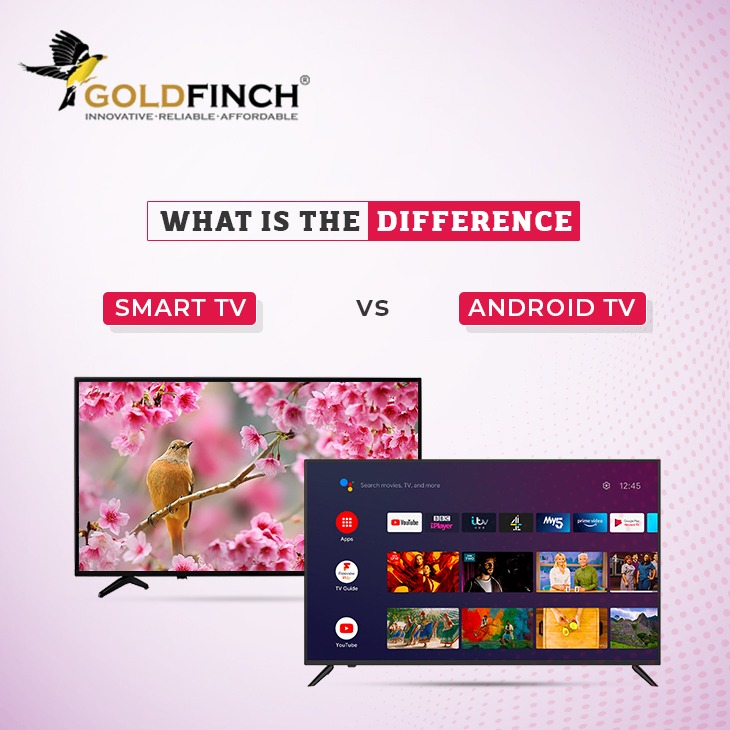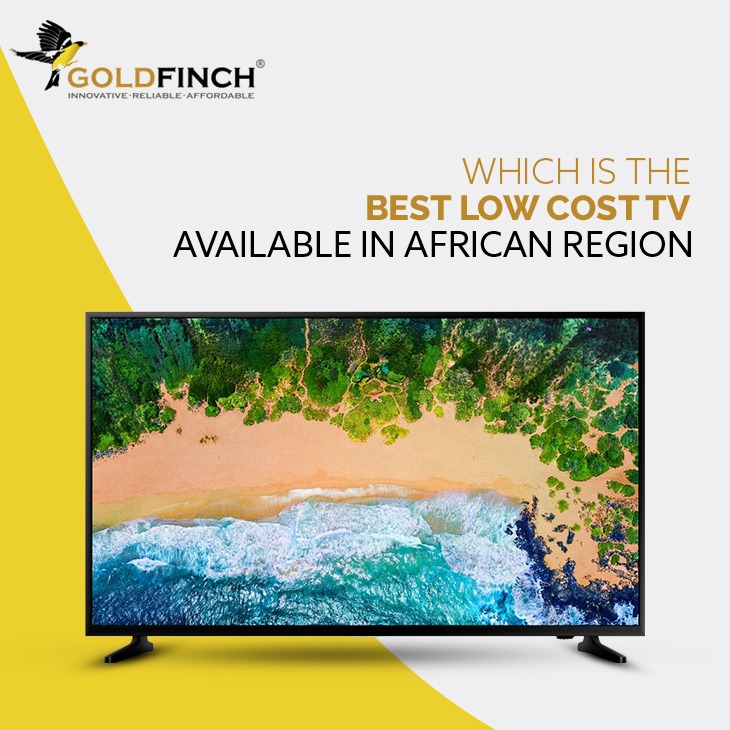
BY ADMIN | May 06, 2021
Difference Between Smart TV & Android TV
When buying a television during this era, you can find a plethora of deals and technical terms that will further confuse your mind. For the past few years, there has been a discussion between Android TV and Smart TV. Some people prefer the ease of use of a standard Smart TV over the features of an Android TV, but for others, Android TV is the first preference to watch online content on a big screen. So, which is better: the Android TV or the Smart TV?
The following article delves into these distinctions and what they have to give consumers.
A Comprehensive Analysis of Android TV vs Smart TV
What Is Smart TV?
A Smart TV, from the perspective of the user, is one that allows you to search and watch online content including music and videos primarily. Through a Wi-Fi link, Smart TVs give you access to the internet to explore and view digital content through the TV.
Netflix, Amazon Prime, and YouTube are among the default applications on Smart TVs. You may also use the app store to import other software or third-party applications.
Features of Smart TV
1. Browsing the Web
The ability to search the web is one of the most basic features of a smart TV. You can use the smart TVs to go online, visit various websites, and watch videos and pictures.
2. YouTube
In most smart TVs, YouTube is the default app. You can always get it from the app store if it doesn't work. The other choice is to use your browser to access the website. You will be able to stream new movie previews, tutorials, and your favourite songs on the big screen regardless of how you get there.
3.Watch Home Videos and Create Photo Slideshows
Smart TVs are an excellent way to watch your videos and pictures on a large screen. Your smart TV can connect to smartphones and cameras wirelessly or through a wired link. You can access the media and cherish your favourite memories once you've set up the link.
4. DLNA Certified Streaming
Digital Living Network Alliance (DLNA) is an acronym for Digital Living Network Alliance. It allows your home's electronic devices to connect with one another over the internet. When your smart TV is DLNA-enabled, you can link it to other DLNA-enabled devices like laptops, tablets, printers, and more.
You can access the devices and play movies, music, or photos once they are connected.
Pros and Cons of Smart TV
Pros
1. You have more choices in terms of screen size, resolution, and sound quality with a Smart TV.
2. Due to the fact that different brands use different operating systems, you can experience a unique GUI.
3. The user interface is straightforward, and switching between screens is easy.
4. Many applications are pre-installed on the TVs. As a result, you won't have to download anything.
Cons
1. The biggest disadvantage is that there are only a few applications and games pre-installed.
2. It's possible that you won't be able to get the OS update for your smart TV. After a few years, some brands discontinue software support for their televisions.
3. They are pricier than standard TVs and many Android TVs.
What is Android TV?
An Android TV is a Smart TV powered by the Android operating system from Google. For smart TVs, brands that do not have their own operating system use Android.
Google has made sure that the OS is updated on a regular basis to fix bugs and boost the user experience. Because of their familiarity with the Android OS user interface, the majority of users prefer Android TV. It also supports a wide variety of games.
Features of Android TV
The Play Store app is the most important aspect of an Android TV. You can use this to download thousands of streaming and entertainment Android applications.
1. Native Chromecast and Google Assistant
The popular Google Assistant voice control and built-in Chromecast features are both available on Android TVs. You can use Google Assistant to find new content, open and close applications, and monitor smart devices in your home. You can conveniently cast content from your phone to your TV using the Chromecast.
2. Custom Home Screen with Personalized Content
The content that appears on the home screen of an Android TV can vary depending on who is watching it. Since the OS generates suggestions based on your browsing history and preferences, this is the case. You can quickly navigate to your favourite applications and websites this way.
3. Voice Search via Remote
Using a remote to type and navigate can be tedious and time-consuming. To avoid this, the standard remote includes a voice search feature. With this feature, you can easily scroll the screen and navigate.
4. Actor/Actress Bios
You can use this feature to see which OTT platform your favorite TV shows are available on. It also includes information on the entire cast. All you have to do is click on the TV show you want to watch. You may also perform a search for your favorite actor to see a full list of his appearance in various films.
5. Games and Entertainment Apps
A large range of applications are available for Android TVs. You can play single-player, multiplayer, and online games with this. It also allows you to play with up to four gamepads, Android tablets, and phones.
Pros & Cons of Android TV
Pros
1. Android TVs are affordable and cost-effective because they do not require the creation of their own operating system.
2. There are over 7000 games and entertainment applications available for Android TVs.
3. Your Android TV can be synced with other Android devices.
4. To enhance the user experience, you can receive regular updates for Android OS.
Cons
1. Most well-known television brands create their own operating system. As a result, your choices will be minimal.
2. Other features, such as high resolution or sound quality, may be lacking depending on the manufacturer.
3. If you are unfamiliar with the Android operating system, it can be difficult to navigate.
Smart TV vs Android TV: Differences
Starting with the App Library, Android TV has access to a large number of applications thanks to Google Play Store support. You'll find all of the applications that you use on a regular basis on your smartphone. All is available on Android TV, from YouTube & Netflix to Hulu & Prime Video. The best thing is that all of the applications are designed for the TV platform and feature easy-to-use controls.
When it comes to smart TVs that run Tizen OS or WebOS, app support is minimal. There aren't many applications in its app store except for some popular entertainment apps like YouTube, Prime Video, and Netflix. The next thing to consider is that, in contrast to Android Televisions, smart TV updates are more difficult to come by. On the other hand, Android TV development is very active, with new updates being released on a regular basis.
Screencasting is another significant distinction between Android TV and smart TV. Unlike Android TV, which has a built-in and deeply integrated Chromecast feature that works smoothly with Android smartphones, smart TVs have screen mirroring, which requires pairing and is a pain to use. Screen mirroring on smart TVs has a higher latency and lower quality performance than Chromecast, which operates in full-screen mode with sound and exceptional quality output.
The help for voice assistants comes next. Google Assistant on Android TV has improved to the point that typing out your question is no longer necessary. Smart TVs, on the other hand, usually lack a voice assistant and instead have a full-size keypad for typing and searching for content.
However, smart televisions have one advantage over Android TV. Android TVs are more difficult to navigate and use than Smart TVs. To fully use the Android TV platform, you must be familiar with the Android ecosystem. The silver lining is that smart TVs also tend to be faster in terms of efficiency.
Finally, we'll talk about firmware updates. After a few years, you're unlikely to see big upgrades to your smart TV, which would make it obsolete. Compared to Android TVs, they don't have a great track record and give nothing in the way of value. However, Android TVs receive longer support for their software elements, ensuring that the Android TV remains up to date.
One thing to keep in mind is that if your smart TV becomes outdated in the future, you can easily connect an Android TV set-top box or dongle to your TV to run the new Android TV platform. You can use your Android TV to do the same thing.
Smart TV vs. Android TV : Comparison
We have created a table that compares smart TV and Android TVs on the most relevant criteria.
| Parameter | Smart TV | Android TV |
| User Interface | Simple | Complex |
| Features | Less | Many |
| Budget range | Expensive | Affordable |
| App supported | Supports 300-600 apps | Supports nearly 7000 apps |
| Reliability | More reliable | Less reliable |
| OS Update Frequency | No frequent updates | Regular update |
| File Transfer Mode | Wired connection | Wired and wireless through apps |
| Initial Installation | Easy | Comparatively difficult |
Android TV vs Smart TV: Which is the Best?
The resolution, sound, and size variations between Smart and Android TVs are unaffected. They are, instead, reliant on unique labels and models.
Considering all this, we suggest an Android TV for the following reasons:
1. An Android TV has far more applications from the Google Play Store than a Smart TV.
2. Your Android TV and other Android devices can be synced.
3. Navigation is aided by the built-in Google Assistant and Chromecast feature.
4. Android OS is updated on a regular basis to fix bugs and boost the user experience.
If you're not sure which brand of television to buy, Goldfinch is a good option. Goldfinch is one of the most popular television brands in Georgia and Azerbaijan. They also feature arguably the best 43 inch Android LED TV in 2021 at an affordable price tag.
Check the below useful links :
- Best 43 inch Android LED TV in Georgia
- Smart TV Deals in Georgia
- Best 43 inch Android LED TV in Azerbaijan
- Smart TV Deals in Azerbaijan



